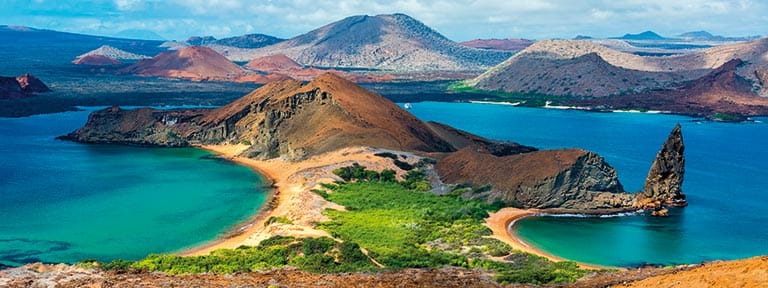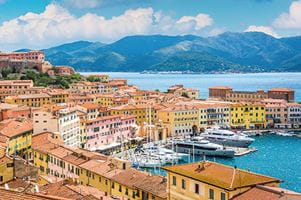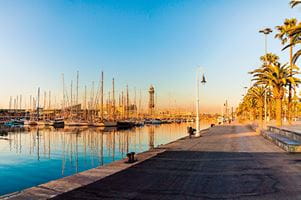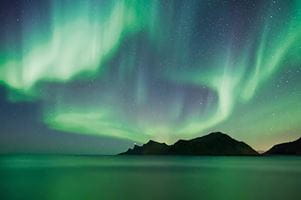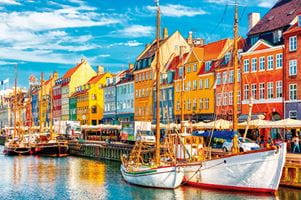Destinations
The wonders of the Galapagos Islands
The Galapagos Island chain is a magical place; lying relatively out on its own in the Pacific Ocean. Forming part of Ecuador, the Galapagos Islands is an archipelago of volcanic islands located on either side of the equator – famed for its untouched landscape and incredible ecosystem.
One of the major draws for the Galapagos Islands is, of course, its incredible array of wildlife. A unique combination of minimal human interference, the arid landscape and a lack of major predators, has led to a fascinating development and natural evolution of species on the islands - with the legendary giant tortoise being just one such example.
Here, we share an insight into this magical destination, covering everything from its varied history to some of the most impressive species you could see when you visit.
The history of the islands
The first recorded visit to the Galapagos Islands happened back in 1535, when the Bishop of Panama stumbled across the undiscovered land during a voyage to Peru. He eventually returned home and described the islands; before long, they were included in a 1570 atlas, before being found again by a buccaneer in 1684. From then, the islands became hot property, and their wonderful wildlife was increasingly admired – peaking in 1835 during Charles Darwin’s visit.
The Galapagos Islands consist of 18 main islands, 3 smaller islands, and 107 rocks and islets – forming a fairly sizable archipelago in the Pacific. As a whole, the islands have a population of around 25,000, with Spanish as the primary language.
While some consider the Galapagos Islands as similar to the Caribbean, or perhaps Hawaii, this tropical, wildlife paradise has more often been likened to the moon. With the islands’ volcanic history, and some being almost void of vegetation, the islands have an other-worldly appeal – and that’s before you look at the incredible wildlife that calls this amazing destination home.
A volcanic hotspot
The Galapagos Islands boast a set of volcanoes, driven by the Galapagos hotspot – an area where the Earth's crust is being melted from below, creating volcanoes. The islands’ volcanoes are between 700,000 and 4 million years old.
Since Darwin’s famous visit, the volcanoes are thought to have erupted over 60 times, with 13 of the volcanoes currently considered active. Mount Whiton, on Isabela Island, was understood to be inactive for 33 years before it erupted in 2015. Fernandina Island, the youngest in the Galapagos chain, features another active volcano, which last erupted in 2017.
A window into the wildlife
Known for its large number of endemic species, the Galapagos Islands is an animal lover’s paradise. Due to the remote and sometimes harsh conditions of the Galapagos Islands, the animals that have survived in this landscape have evolved to acquire specific traits that suit their particular niche. This evolution was studied by Darwin, with his observations on the islands contributing to his theory of evolution by natural selection.
In addition, the Galapagos Islands are largely free from introduced or invasive species, offering a pristine window into the ecosystem. Due to its isolation, the wildlife hasn’t developed an expected innate fear of humans. This means that while in some more frequented destinations, like the Amazon, it’s rare to see some large creatures up close, in the Galapagos the animals are generally fairly comfortable to continue going about their business in the presence of humans.
5 unique animals to see on your visit
The Marine Iguana

Only found on the Galapagos Islands, the marine iguana is one of the only to forage for food underwater. It can dive to depths of up to 9 metres and can be found on many of the islands’ rocky shores.
The Galapagos Penguin

This species of penguin is the only of its kind to be found in the wild north of the equator. It’s smaller than most other penguins and can be found on Fernandina or Isabela islands, and their surrounding waters.
The Lava Gull

The lava gull can be identified by its beautiful pale-grey feathers and black head. It’s widely considered to be one of the largest and rarest gulls in the world. It was first documented on Santiago Island, and can now be found in small groups along many of the rocky coastlines.
The Giant Tortoise

The Galapagos Islands are home to the largest tortoise in the world, imaginatively known as the giant tortoise. The largest on record is nearly 6ft long, with examples weighing over 400kg! It’s thought that the islands are named after the tortoises first spotted by Spaniards in 1535. Galapagos means tortoise in Spanish.
The Flightless Cormorant

There are thought to be only 1000 flightless cormorants left in the world, making them one of the rarest birds on the planet. The lack of predators has removed this bird’s need to fly, making them the only cormorant in the world that cannot fly – look out for their tiny wings!
Visiting the Galapagos Islands
If a visit to the Galapagos Islands is on your wish-list, then now’s the time to take the plunge. Guests on our incredible South American Explorer cruise have the opportunity to enjoy an overland tour to the islands. Not only will you get a chance to see the beautiful islands up close, but you’ll also explore the Lava Tunnels, the Charles Darwin Station, where giant tortoise breeding takes place, and the city of Guayaquil.
The opinions expressed are those of the author and are not held by Saga unless specifically stated.
The material is for general information only and does not constitute investment, tax, legal, medical or other form of advice. You should not rely on this information to make (or refrain from making) any decisions. Always obtain independent, professional advice for your own particular situation.
